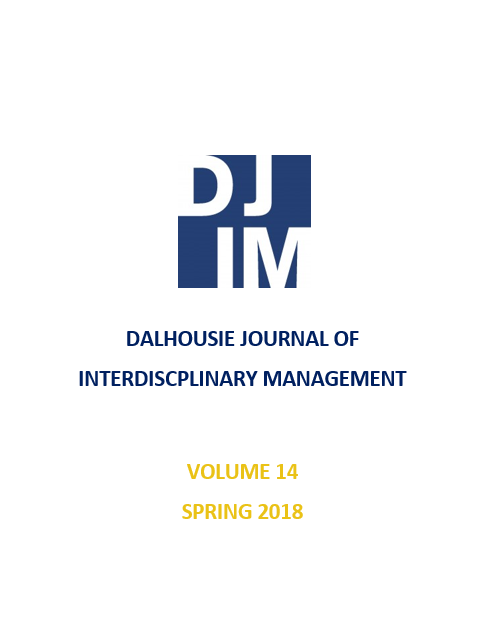Managing Copyright in Digital Collections: A Focus on Creative Commons Licences
DOI:
https://doi.org/10.5931/djim.v14i0.7852Keywords:
Creative Commons, digital rights management, DRM, technological protection measures, TPM, digital collections, public institutions, libraries, educational institutionsAbstract
Digital collections in public institutions can benefit from Creative Commons licenses, as they allow the responsible sharing and use of information online by faculty, students, researchers, and the public at large. This essay outlines the proper management of Creative Commons licenses in the following order: first, the current state of copyright in Canada; second, how the Creative Commons functions and its relation to free culture and Open Access; third, Creative Commons for public institution collections, and not just as a holding body, but as a repository; fourth, tools for managing Creative Commons licences online, including digital rights management (DRM) and technological protection measures (TPMs); and fifth, future impacts of the Creative Commons on digital collections. Creative Commons licences offer libraries that opportunity to expand their patronage and explore broader uses of their collections.References
Copyright Act, RSC, 1985, c C-42.
Creative Commons. (n.d.). Describing copyright in RDF: Creative Commons Rights Expression Language. Retrieved from https://creativecommons.org/ns
Creative Commons. (2008, May 1). ccREL: The Creative Commons Rights Expression Language. W3C. Retrieved from https://www.w3.org/Submission/ccREL/
Creative Commons. (2017a). CC0. Retrieved from https://creativecommons.org/share-your-work/public-domain/cc0/
Creative Commons. (2017b, November 1). Frequently asked questions. Retrieved from https://creativecommons.org/faq/#How_should_I_decide_which_license_to_choose.3F
Creative Commons. (2017c). Licensing considerations. Retrieved from: https://creativecommons.org/share-your-work/licensing-considerations/
Creative Commons. (2017d). Licensing types. Retrieved from: https://creativecommons.org/share-your-work/licensing-types-examples/
Creative Commons. (2017e). Public Domain Mark. Retrieved from https://creativecommons.org/share-your-work/public-domain/pdm/
Gulley, N. (2013). Creative Commons: Challenges and solutions for researchers: A publisher‘s perspective of copyright in an open access environment. Insights: The UKSG Journal, 26(2), 168-173. Retrieved from https://doaj.org/article/b1a838bbf6b04855983b17b4f36430dd
Harris, L.E. (2014). Canadian copyright law (4th ed.). Hoboken, NJ: John Wiley & Sons Inc.
Jordan, M. (2006). Chapter 3: Copyright and digital library collection. In Putting content online: A practical guide for libraries (37-51). Oxford, UK: Chandos Publishing.
Lavoie, B. (2000, January/February). Meeting the challenges of digital preservation: The OAIS reference model. OCLC Newsletter, 243, 26-30. Retrieved from https://www.oclc.org/research/publications/library/2000/lavoie-oais.html
Lipinski, T. A. (2013). The librarian's legal companion for licensing information resources and services. Chicago: American Library Association.
Mewhort, K. (2012, June 1). Creative Commons licenses: Options for Canadian open data providers. Ottawa, ON: Samuelson-Glushko Canadian Internet Policy and Public Interest Clinic, University of Ottawa. Retrieved from the Canadian Electronic Library.
Murray, L.J., & Trosow, S.E. (2013). Canadian copyright: A citizen‘s guide (2nd ed.). Toronto, ON: Between the Lines.
National Information Standards Organization (NISO). (2007, December). A framework of guidance for building good digital collections (3rd ed.). Baltimore, MD: National Information Standards Organization (NISO). Retrieved from http://www.niso.org/sites/default/files/2017-08/framework3.pdf
Sabharwal, A. (2015). Digital curation in the digital humanities: Preserving and promoting archival and special collections. Elsevier Science. Retrieved from ProQuest Ebook Central.
Scassa, T. (2005). Interest in the balance. Michael Geist (Ed.), In The public interest: The future of Canadian copyright law (pp. 41-65). Toronto, ON: Irwin Law. Retrieved from https://www.irwinlaw.com/sites/default/files/attached/One_02_Scassa.pdf
UNESCO Maaya Network. (2012). Net.Lang: Towards the multilingual cyberspace. L. Vannini & H. Le Crosnier (Eds.). Caen, France: C&F éditions. Retrieved from http://www.unesco.org/fileadmin/MULTIMEDIA/HQ/CI/CI/pdf/netlang_EN_pdfedition.pdf
World Intellectual Property Organization (WIPO). (2016). Understanding copyright and related rights. Geneva: World Intellectual Property Organization. Retrieved from http://www.wipo.int/edocs/pubdocs/en/wipo_pub_909_2016.pdf
Downloads
Published
Issue
Section
License
Papers published in the Dalhousie Journal of Interdisciplinary Management must be the original, unpublished work of the author. Contributors are responsible for obtaining any copyright clearances required in relation to their work.
Authors submitting a paper to the Dalhousie Journal of Interdisciplinary Management automatically agree to grant a limited license to DJIM if and when the manuscript is accepted for publication. This license gives permission for DJIM to publish the paper in a given issue and to maintain the work in the electronic journal archive. DJIM also submits issues to institutional repositories and Open Access repositories.
Contributors agree to each reader accessing, downloading, or printing one copy of their article for their own personal use or research. All other copyrights remain with the author, subject to the requirements that any republication of the work be accompanied by an acknowledgement that the work was first published in the Dalhousie Journal of Interdisciplinary Management and that the DJIM Editorial Chair must be notified of any republication of a work first published in DJIM.
Dalhousie Journal of Interdisciplinary Management
c/o School of Information Management
Faculty of Management
Dalhousie University
Kenneth C. Rowe Management Building
6100 University Avenue
Halifax, Nova Scotia B3H 3J5
Canada
Email: djim@dal.ca
Authors should recognize that, because of the nature of the Internet, the publisher has no control over unauthorized copying or editing of protected works.


